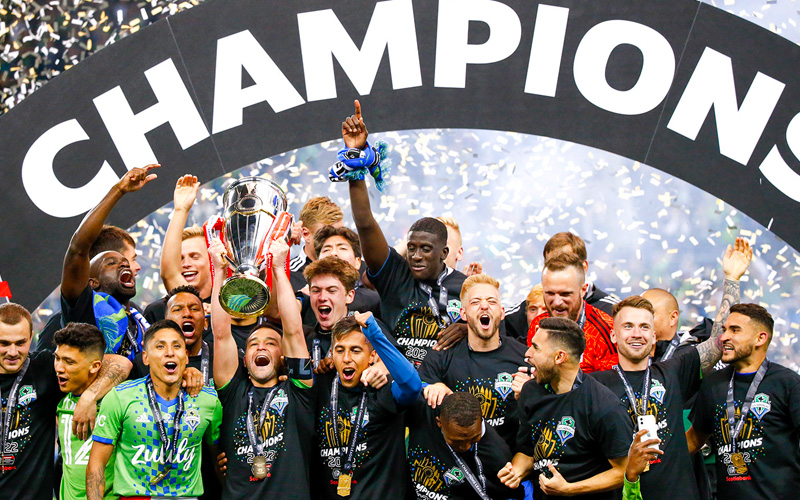Early CONCACAF Champions League Performances
Major League Soccer (MLS) clubs have been participating in the CONCACAF Champions League since its inception in 2008. The tournament, which includes clubs from North America, Central America, and the Caribbean, has offered MLS teams a chance to compete against top regional competition and measure their progress.
In the early years of the competition, MLS clubs experienced limited success. Between 2008 and 2011, only two MLS teams, Houston Dynamo (2008-09) and Real Salt Lake (2010-11), managed to reach the finals. However, both teams were unable to secure the title, with Houston Dynamo losing to Mexico’s Atlante and Real Salt Lake falling short against Monterrey.
Increased Investment and Improved Results
To compete with the dominant Mexican clubs, MLS increased investment in player development, stadium infrastructure, and coaching. This investment started to pay off in 2012 when Toronto FC reached the semifinals. Although they lost to Santos Laguna, it marked the beginning of a shift.
In the following years, MLS teams continued to progress in the competition. From 2012 to 2015, at least one MLS club reached the semifinals each year. LA Galaxy advanced to the last four in 2012-13, while Montreal Impact went even further in 2014-15, becoming the second MLS team to reach the finals. However, they were unable to break the Mexican dominance, losing to Club América.
The Rise of MLS Clubs in the 2015-16 and 2016-17 Seasons
The 2015-16 and 2016-17 seasons showed significant improvements for MLS clubs in the CONCACAF Champions League. In the 2015-16 season, four MLS teams reached the quarterfinals: D.C. United, LA Galaxy, Seattle Sounders, and Real Salt Lake. This was the first time that four MLS clubs made it to the last eight of the competition. Although none of the teams advanced to the semifinals, their collective performance marked a turning point for MLS’s presence in the tournament.
The 2016-17 season was another step forward. FC Dallas reached the semifinals, narrowly losing 4-3 on aggregate to Pachuca. Vancouver Whitecaps also reached the last four, losing to Tigres UANL. This marked the first time two MLS clubs reached the semifinals in the same season.
2018: Toronto FC’s Historic Run
The 2018 CONCACAF Champions League saw Toronto FC achieve what no other MLS team had done before: eliminate two Mexican teams in the knockout stage. Toronto FC defeated UANL Tigres in the quarterfinals and Club América in the semifinals, setting up a showdown with Chivas Guadalajara in the final.
The final was a tightly contested affair, with both legs ending in draws (2-2 and 1-1) and the title being decided through penalty kicks. Unfortunately for Toronto FC and MLS, Chivas edged the shootout 4-2, continuing the Mexican clubs’ dominance in the competition.
Despite the heartbreaking loss, Toronto FC’s run gave hope to MLS clubs and demonstrated that the gap between MLS and Liga MX was closing.
Sporting Kansas City’s 2019 Semifinal Appearance
In the 2019 edition of the CONCACAF Champions League, Sporting Kansas City reached the semifinals, becoming the fifth MLS team to do so. They faced a tough test against Liga MX powerhouse Monterrey, ultimately losing 10-2 on aggregate. The result demonstrated that, while MLS clubs were making progress, there was still work to be done to consistently compete with the best in the region.
2020: LAFC’s Run to the Final
The disruption caused by the COVID-19 pandemic led to a unique format for the 2020 CONCACAF Champions League. The competition was suspended in March and resumed in December, with all remaining matches played in a single-elimination format in Orlando, Florida.
LAFC, led by star forward Carlos Vela, capitalized on the unique circumstances, reaching their first-ever final. Along the way, they defeated three Mexican clubs, including powerhouse Club América in the semifinals. In the final, LAFC faced Tigres UANL, and despite taking the lead through a Diego Rossi goal, they ultimately fell short, losing 2-1.
MLS Clubs’ Progress and Challenges
Over the past decade, MLS clubs have shown significant progress in the CONCACAF Champions League. Increased investment, improved player development, and stronger performances against Liga MX opposition have demonstrated the league’s growth.
However, challenges remain. MLS clubs have yet to win a CONCACAF Champions League title, and the competition has been dominated by Mexican clubs, who have won 12 of the 13 tournaments since 2008. Additionally, the congested schedule and travel demands can make it difficult for MLS clubs to balance domestic and international competition.
Despite these challenges, the recent successes of MLS clubs in the CONCACAF Champions League provide hope for the future. As the league continues to grow, the gap between MLS and Liga MX continues to narrow, increasing the likelihood of an MLS club finally lifting the trophy in the coming years.

